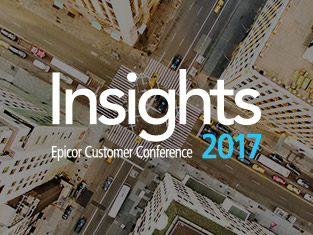Private cloud deployment is changing the way manufacturing and distribution companies install applications and store information. While this is an exciting move for any business, the step from on-premise to cloud infrastructure can come with unexpected costs. Many companies expect, and easily budget for, typical costs associated with the move to private cloud, but hidden expenses often blur into the fine print of the original pricing model. Thus, it’s important for a manufacturing or distribution business to budget wisely when moving from on-premise to private cloud infrastructure.
Cloud costs vary according to several different factors, and data comes into play at all levels. A company is its historical data applied to its future, or potential, data. Private cloud protects the data of a business while also utilizing it in real-time, and this cloud data normally exists in one of three states:
- Data moving in. This is data as it moves into the storage location or as it is being uploaded. This process is also known as data ingress.
- Data moving out. This is data as it moves out of the storage location or as it is being downloaded. This is sometimes referred to as data egress.
- Data “at rest.” This can be data residing in a static manner in the storage location and not in transit on the network.

Data In, Data Out
Not surprisingly, costs are tailored around these types of data. Storage budgets are related to the costs of data that is physically being held at a location. Normally, the storage of “at rest” data receives the most attention, as cloud providers offer various pricing structures based on how much data is stored, where the data is located, how often it needs a backup, how often it tends to be accessed, and how quickly it needs to be retrieved.
Many cloud providers do not charge customers for data upload or ingress, and the reasoning is obvious: the more data you upload, the more you get charged for “data at rest.” But one of the most significant hidden costs of the cloud relates to data egress charges—the charges leveled by your cloud provider for accessing your own data.
Think of your old phone bill before the cell phone revolution—each call outside the local area was billable, and the costs varied according to the duration of the call and the location to which the call was made. Egress charges work similarly and are based primarily on the amount of data transferred. Over time, this becomes a matter of dialing for dollars. Should the data transfer increase, the charges will follow.
At its worst, this could become a situation of data rationing, where users are instructed to minimize their pulls from the data source, to minimize costs. This is akin to a mother in the 1980s locking up her new push button phone, out of fear that her toddler, enamored with the button tones, might mistakenly dial Hawaii.
Data rationing is hardly the outcome that one would expect from a move to the cloud, yet egress pricing models put companies in a precarious position. This poses a challenge for companies new to the cloud. Customers accustomed to comprehensive local area networks do not always realize the amount of data that leaves one area of the network to be consumed by another, and thus may be unaware of their ultimate egress requirements. Also, companies may have difficulty in predicting spikes in usage. Without understanding when data use may increase, manufacturing and distribution companies will have trouble predicting expenses.
Data Grows on Trees
Companies using applications that operate in a client-server manner may be similarly challenged when they choose to host their server in the cloud. The data requirements of private cloud can be as surprising as they are significant. A client-server application like Epicor ERP, for instance, is a rather chatty application, as it frequently performs “get” calls to refresh data, in relation to other transactions. In such a case, each “get” would entail a “give” in the form of cold hard cash. For companies utilizing manufacturing execution systems in which users are routinely downloading work instructions and product schematics, in support of manufacturing operations, the costs would further compound.
The complexity involved in manufacturing and distribution requires the innovation of private cloud technology. To transition from on-premise architecture, Epicor ERP customers looking to host their application in a private cloud need predictable costs and reliable budgets—a pricing model that does not involve surprise charges linked to the amount of data traveling into or out of the cloud hosting environment. Egress can cause a budgetary mess, but you have the option to choose a pricing model that doesn’t watch your every download move. Your company can have the reliability and innovation of private cloud without any of the hidden data egress costs that currently abound in the fine print of the cloud market.

